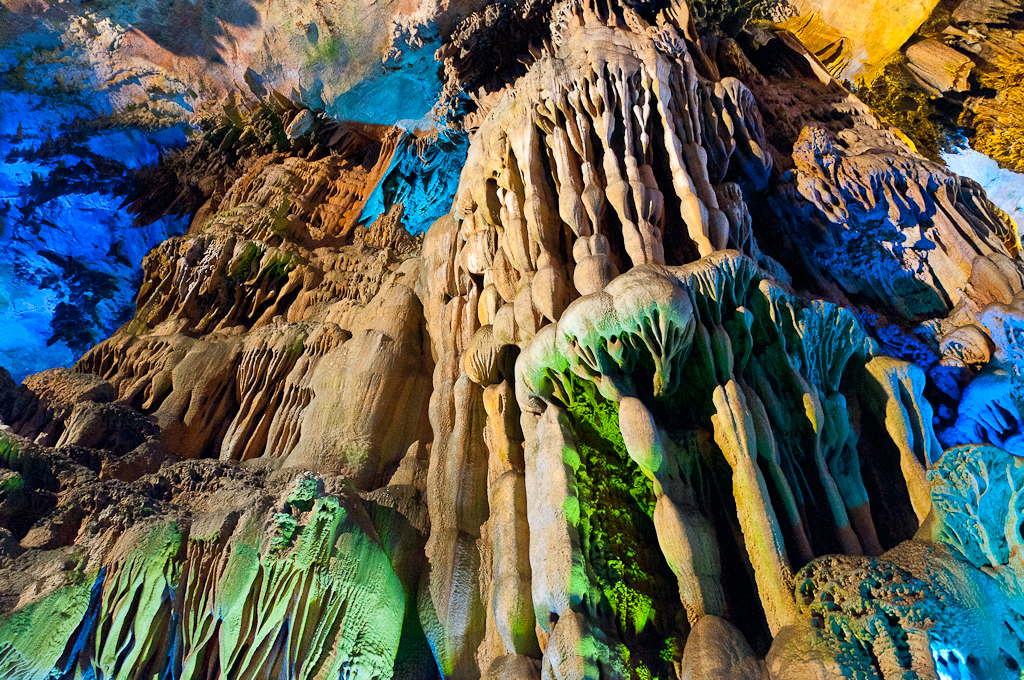Reed Flute Cave (Lu Di Yan)
With its location five kilometers northwest of the downtown of Guilin, the Reed Flute Cave is a brilliant cave marked on almost all travel itineraries. The cave got its name from the verdant reeds growing outside it, with which people make flutes. Inside this water-eroded cave is a spectacular world of various stalactites, stone pillars and rock formations created by carbonate deposition. Illuminated by colored lighting, the fantastic spectacle is found in many variations along this 240-meter-long cave. Walking through the serried stone pillars, tourists feast their eyes on changing spots, feeling they are in a paradise where the Gods live.
Tourists enter the cave and then take a U-shaped sight-seeing route to see different spots, whereupon they exit it from another cave quite near the entrance one. One trip lasts about one hour. It is a Chinese habit to give each formation a legendary or poetic name such as Crystal Palace, Dragon Pagoda, Virgin Forest, Flower and Fruit Mountain and other interesting names. For some of these names, you need to use your imagination, but the story behind each is quite fun. It’s a pleasure to listen to romantic or fairy tales whilst appreciating the fantastic stone formations. Both the stories and the lighting add mystery to the scene. Although there are different kinds of lighting inside, you are not supposed to take photos unless you are a professional photographer, because the light inside is not sufficient for exposure. At some spots, such as the Crystal Palace or Flower and Fruit Mountain, special photography is offered at 20 yuan for one picture. (They use special equipment to provide enough illumination.) Some 70 inscriptions on the cave wall are said to be travelogues and poems derived from the Tang Dynasty, which made the cave a popular tourist site at that time.
http://www.travelchinaguide.com/attraction/guangxi/guilin/flute.htm
